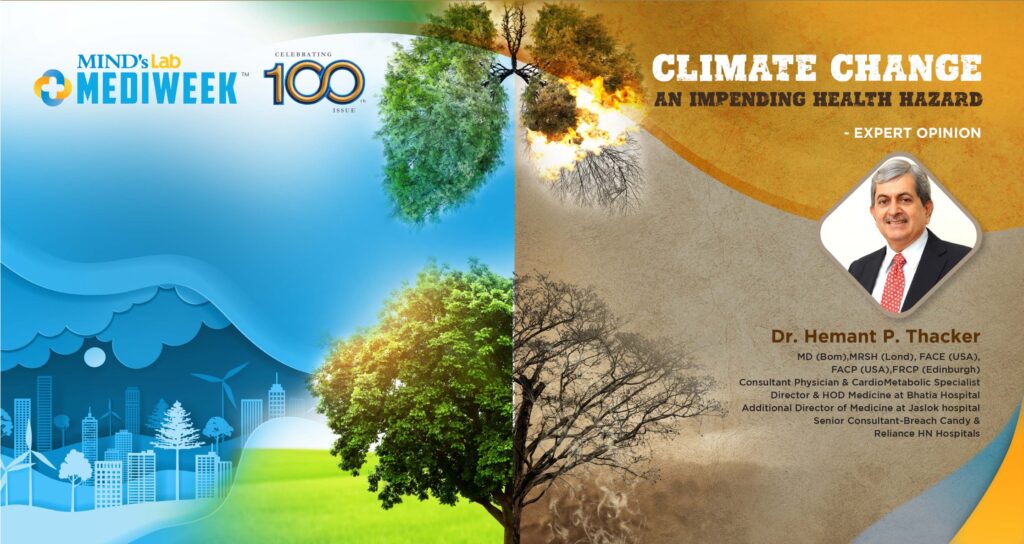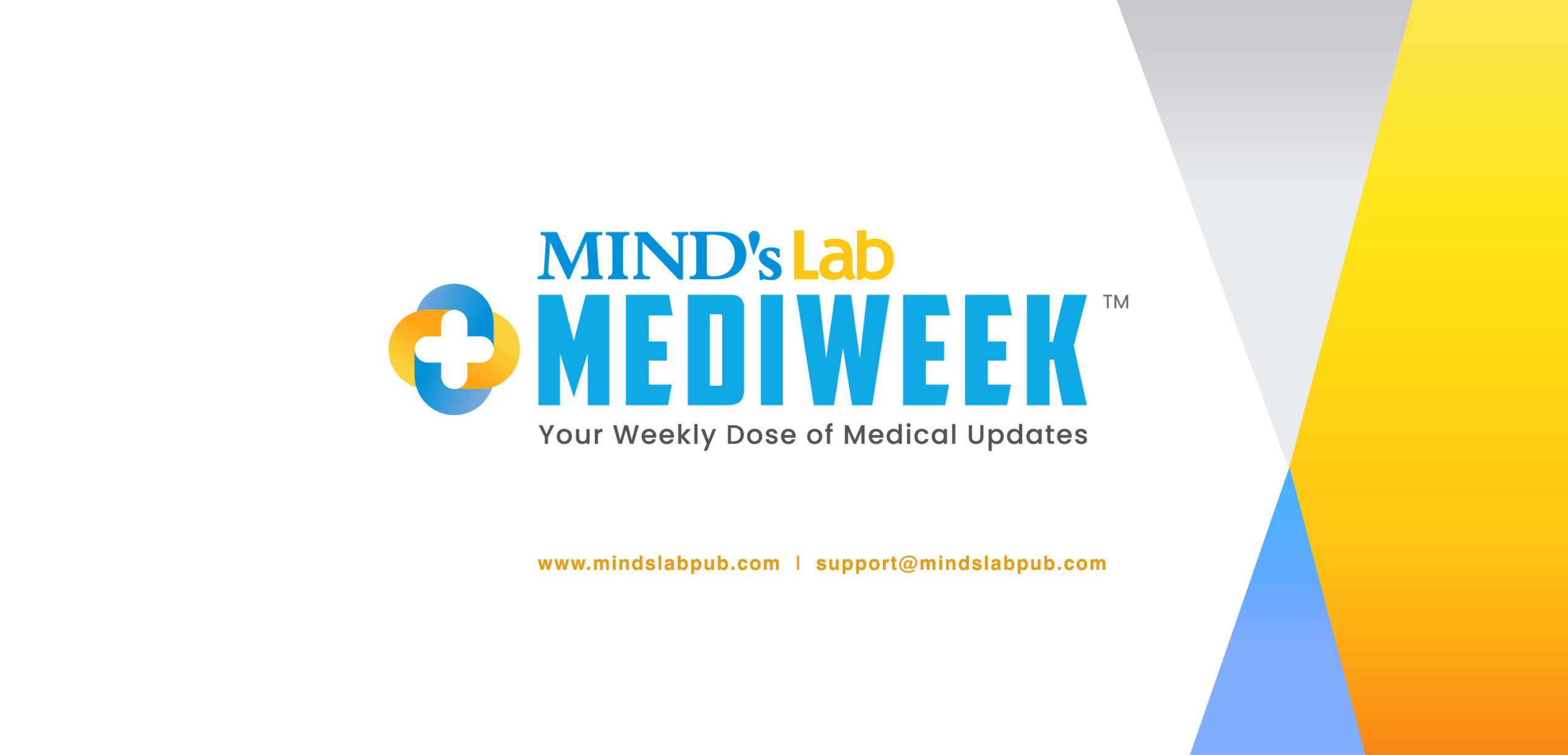
MIND’s Lab Publishing Team is delighted to achieve an uninterrupted publication of the 100th Issue of “MIND’s Lab MediWeek” Newsletter! This newsletter is our endeavour under Corporate Social Responsibility for creating public health awareness on pertinent health issues and evolving challenges through high quality recent research evidences presented in very simple language.
To mark the publication of our 100th issue of MediWeek newsletter, the Medical Team of Mind’s Lab Publishing had an interactive conversation with Dr. Hemant P. Thacker, an eminent Consulting Physician and Cardiometabolic Specialist from Mumbai on the emerging topic of health hazards of climate change.*
Dr. Thacker provided valuable insights on the topic and provided practical tips to minimize the negative impact of climate change on health.
Key highlights of the conversation
Climate change results in severe storms, wildfires, heavy rainfall, rising sea levels, and fluctuating seasons, including early monsoons and hotter summers. All of these can cause significant negative impact on human health and well-being in both, short and long-term and is drawing the attention of global healthcare specialists. The health implications of climate change, as discussed with Dr, Thacker, are summarized below.
1. Incidence of heat-related illness in clinical practice in India
At least 25−50% of the patients visiting clinics during the summer were noted to have heat-related illnesses and complications. These include heat cramps, headache, sweating, and complications such as pulmonary edema, cerebral edema, and dehydration. Fungal infections, gastrointestinal infections, and infections of the hair follicle are also observed.
2. Impact of climate change-induced air pollution on respiratory function
Climate change-induced air pollution is equivalent to smoking 10 cigarettes a day! Air pollution is associated with chronic lung diseases such as chronic obstructive pulmonary disease (COPD), bronchitis, pneumonia, and asthma. Children, pregnant women, and senior citizens are especially vulnerable to these problems.
3. Urban heat island effect – A vicious cycle
An urban heat island occurs when a city experiences warmer temperatures than nearby rural areas. This results in increased use of air conditioners, which in turn causes increased greenhouse effect and further heating.
4. Climate change and vector-borne diseases
Climate change is expected to increase the risk of vector-borne and water-borne diseases such as malaria, cholera, leptospirosis, and dengue. For example, dengue, which was previously seen seasonally is now seen throughout the year.
5. Minimizing the impact of climate-change-induced respiratory diseases
· Stay up to date with vaccination schedule
· Limit exposure to air pollution and allergens
· Use masks if required
· Practice good hygiene
· Limit exposure to both, active and passive cigarette smoke
6. Impact of weather changes and temperature fluctuations
· Seasonal variations and climate change present challenges by increasing the risk of cardiovascular diseases such as heart failure, heart attacks, hypertensive crises, and palpitations.
· In addition to affecting the quality of life, these factors can lead to developmental and cognitive impairments in children.
7. Impact of climate change-induced temperature fluctuations on heart physiology
In high temperatures, the body experiences increased core temperature, vasodilation, dehydration, volume depletion, and changes in heart rate. A drop in core body temperature can result in increased heart rate, increased sympathetic activity, and vasoconstriction and increased blood pressure.
8. Temperature change and type 2 diabetes mellitus
There is a significant connection between climate change and the rising prevalence of diabetes, as individuals with diabetes are more susceptible to environmental risk factors.
9. Climate change and sleep disruption
Climate change can disrupt sleep because of heat and air pollution as well as through anxiety, depression, and worry, impacting health and emotional well-being.
10. Climate change and bone health
Climatic change is associated with premature fluorosis. Exposure to high fluoride levels in children leads to incorporation of fluoride in the developing skeleton, leading to a dense but brittle bone structure that is more susceptible to fractures.
11. Climate change and gastrointestinal health
Warmer temperatures can increase foodborne pathogens and gastrointestinal illnesses, which can impact nutrient absorption.
12. Climate change and development of human brain
Changing climate patterns and extreme weather may cause developmental impairment, which needs more research.
13. Climate change – Impact on diet
Rising temperatures and CO2 levels can reduce the nutrient content of fruits and vegetables as well as food availability and diversity. This may lead to more reliance on processed or less nutritious foods or limited variety of foods.
14. Climate change – Impact on learning in school children
High temperatures can impair concentration and cognitive function, reducing classroom performance.
Summing up, this existential threat of climate change and its impact on human health is leading to “Eco-anxiety”, a worry about present and future harm to the environment caused by human activity and climate change.
*Complete video of the Podcast will be released shortly on various platforms.
